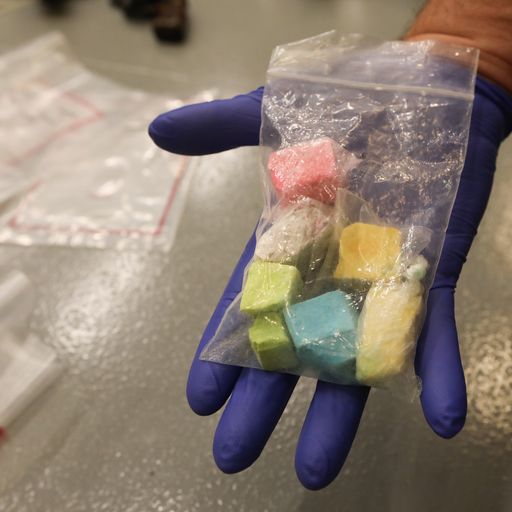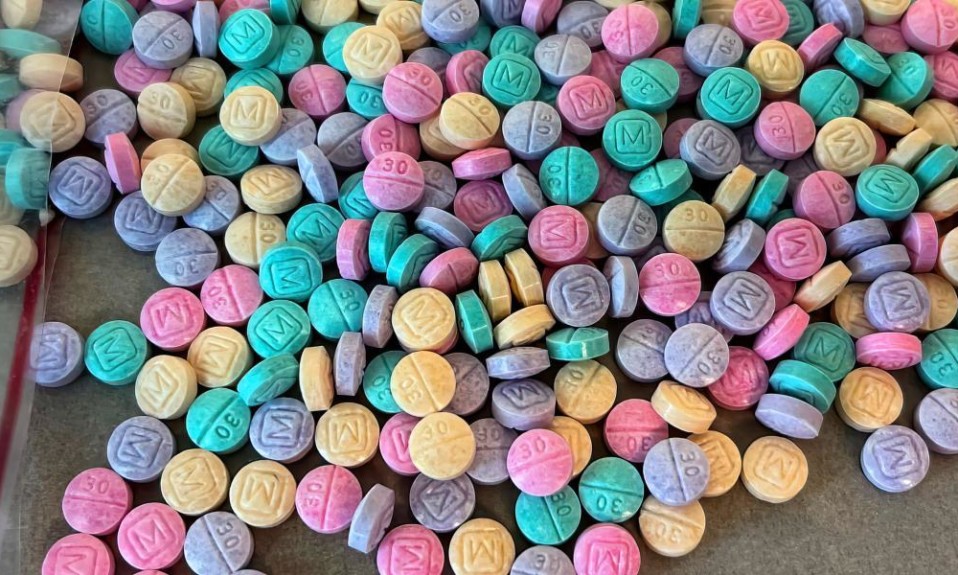Plus: Clear guidance on fentanyl exposure, a federal lawsuit over health data collection, and more industry news
By Mark Mravic
New & Next: Illicit Drugs
The Rise of “Rainbow Fentanyl”
The emergence over the summer of so-called “rainbow fentanyl”—brightly colored versions of the highly toxic synthetic opioid—has law enforcement and harm reduction advocates voicing growing concern. After recent seizures in the Portland, Ore., area, the U.S. Attorney’s Office for the District of Oregon and the U.S Drug Enforcement Agency (DEA) issued a warning on Aug. 26 for people to be on the lookout. “It doesn’t matter what color, shape or form it comes in,” said DEA acting special agent in charge Jacob D. Galvan from the Seattle Field Division. “Just two milligrams of fentanyl—the equivalent of 10 to 15 grains of salt—is enough to kill someone.”

Rainbow fentanyl has been appearing in a variety of forms, either pills that resemble candy or small blocks of powder that look like sidewalk chalk. The novel appearance has law enforcement officials worried that traffickers are using the flashy colors to appeal to children. In an alert issued by the DEA on Aug. 30, Administrator Ann Milgram warned, “Rainbow fentanyl—fentanyl pills and powder that come in a variety of bright colors, shapes and sizes—is a deliberate effort by drug traffickers to drive addiction amongst kids and young adults.”
The concern for children has been echoed in a number of places. After a mid-August seizure in Multnomah County (Ore.) that included both familiar blue “M-30” fentanyl pills and chunks of fentanyl powder in light blue, pink, yellow and lime green, an alert from the sheriff’s office noted, “Deputies are particularly concerned about rainbow fentanyl getting into the hands of young adults or children, who mistake the drug for something else, such as candy or a toy, or those who may be willing to try the drug due to its playful coloring.”
In California, growing reports of rainbow-colored pills prompted Placer County District Attorney Morgan Gire to say, “We find this rainbow-colored substance is one of the many tools that dealers are using to make the poison appeal to our kids.”
And in announcing the seizure of more than 15,000 candy-colored fentanyl pills earlier this month by the Customs and Border Patrol at the Port of Entry in Nogales, Ariz., Director Michael W. Humphries said on Twitter, “This could be the start of a trend with Transnational Criminal Organizations targeting younger users.”
Just this Monday, Humphries noted that of the 625,000 fentanyl pills seized at Nogales last week, 12,000 were rainbow-colored.
Others, however, doubt that kids are being targeted with the colored pills. Claire Zagorski, program coordinator at the Pharmacy Addictions Research and Medicine Program at the University of Texas at Austin, told Vice.com that traffickers are most likely adding colors as a branding device, to make their product stand out in a crowded illicit marketplace. “There is not a lot of money in targeting kids,” Zagorski said, “and this idea that drug sellers are coming for our children is a very old one that’s been washed and repeated over the decades.”
The greater danger from rainbow fentanyl may be its unfamiliarity. Since it’s relatively new, law enforcement, health workers and treatment centers, and users themselves don’t really know what’s in the stuff. Harm reductionists say that’s reason for added caution. Kelsi Junge, harm reduction supervisor for the Multonomah County Health Department, said, “We are seeing more powdered fentanyl that is dyed in various colors. The strength can vary but is typically stronger than pressed pills.” Added Julie Dodge, Multnomah County’s interim director for behavioral health, “That’s why the main message always has to be, we take a risk any time we take a substance that we don’t know who made it, and when there’s no quality control.”
New & Next: Policy
Tennessee Separates Fact from Fiction on Fentanyl Exposure
Speaking of uncertainties surrounding fentanyl, Tennessee’s Department of Mental Health & Substance Abuse Services issued new guidance on fentanyl exposure that is meant to “stress facts over fear and focus on helping people recover.”
Noting the spate of media stories—often generated by law enforcement—that recount adverse medical reactions after alleged exposure to powdered fentanyl, the department’s guidance said, “llicit fentanyl cannot be absorbed through the skin or by touching an item or surface where it is present. When in powder form, fentanyl and its analogs (including carfentanil and fluorofentanyl) cannot be absorbed through the skin. Dissolving the powder in a liquid does not change this property. Wet objects do not pose an increased risk for an overdose caused by casual exposure.”
The guidance went on to advise what to do if you have been exposed to a substance you believe could be fentanyl:
- Do not touch your eyes, nose, or mouth
- Wash your hands with soap and water to remove any substance from your hands
- If you begin to experience any adverse medical symptoms, seek medical attention
“For a fentanyl overdose to occur,” the guidance read, “the powder must enter the bloodstream and get to the brain. This is why it is important to avoid touching your eyes, nose or mouth until you can wash your hands. Fentanyl can also enter the bloodstream through cuts or wounds on the skin. Wounds must be open and visible to allow fentanyl to enter.”
Symptoms of fentanyl overdose, the department noted, include pinpoint pupils, falling asleep or losing consciousness, slow and shallow breathing, choking or gurgling sounds, and pale, blue or cold skin. Symptoms such as alertness, rapid heartbeat, hyperventilation, sweating and chills—often the reactions reported in alleged police exposures—are not typically associated with fentanyl or other opioids, the statement noted.
New & Next: Legal
FTC Sues a Data Company Over Alleged Healthcare Surveillance
In the wake of the Roe v. Wade reversal, the Biden Administration in July ordered the Federal Trade Commission (FTC) to crack down on the misuse of data that could reveal someone’s sensitive medical and personal information. This week the FTC filed a lawsuit against data broker Kochava, alleging that the Idaho company was selling geolocation information gathered from hundreds of millions of cellphones that can be used to trace people’s movements to and from locations such as reproductive health clinics, places of worship, homeless and domestic violence shelters and addiction recovery facilities. The FTC says such information could expose users to stigma, stalking, discrimination, job loss and even violence, and that most users are unaware that their location data is being tracked and sold.
Regarding addiction treatment centers, the FTC said such data “could show how long consumers stayed at the center and whether a consumer potentially relapses and returns to a recovery center.” Samuel Levine, director of the FTC’s Bureau of Consumer Protection, said, “Where consumers seek out healthcare, receive counseling or celebrate their faith is private information that shouldn’t be sold to the highest bidder.”
In a statement to the press, Kochava called the FTC’s actions “frivolous” and “flamboyant” and said the agency doesn’t understand Kochava’s data business. It also pointed to the recent introduction of a “privacy block” feature that would remove health services locations from its data sets.
New & Next: Webinars
Transitioning to Digital Group Meetings
While the expansion of telehealth services has been a boon to people in recovery, the shift in treatment modality has come with limited training opportunities for many treatment providers. On Sept. 14, from 3-4:30 ET, NAADAC will host the webinar “From Virtual to Real Life: Effective Group Treatment,” to help counselors translate face-to-face skills to telehealth. The presentation is intended to provide counselors with tools to create effective virtual groups at various levels of care, as well as develop skills to enhance online group cohesion and participation.
The course is free, and participants can earn 1.5 CEs. For more information and to register, go here.













